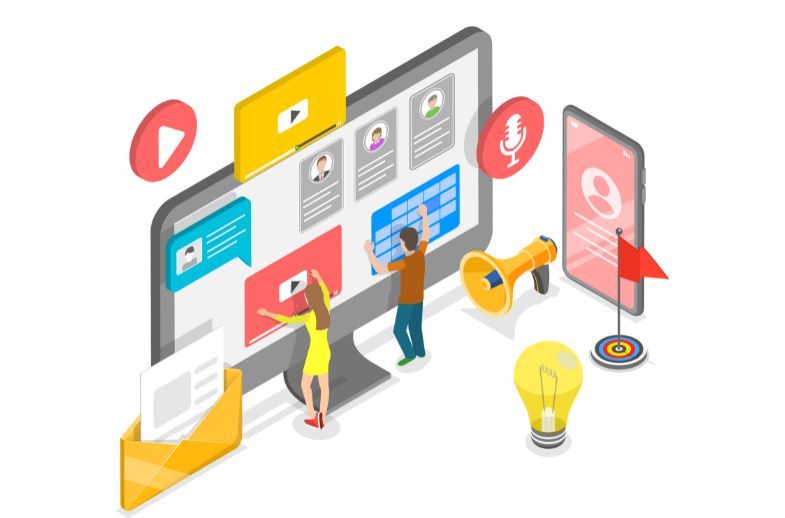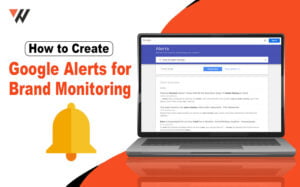Your blog’s homepage acts as the front door to your digital home. As the first thing visitors see when they land on your blog, it establishes the mood for the remainder of their browsing session. A well-designed blog homepage may promote exploration, maintain reader engagement, and increase traffic to your content. By properly organizing your blog, you may emphasize your most popular or recent entries, highlight essential categories or subjects, and give easy navigation for users to explore your content. Visually appealing components, such as eye-catching photographs or videos, can engage your visitors and encourage them to stay on your site longer.
The best techniques for creating a captivating and compelling blog homepage will be looked at in this article.
A Catchy Header
The header for your blog should be interesting, clear, and concise. It should immediately convey to readers the goal and focus of your blog. Ensure that your header is prominent at the top of the page. This will draw readers in and make it simple for them to understand why you are blogging. Consider using solid, compelling words that evoke curiosity or emotion to engage your audience further.
Featured Content or Posts
Highlight your finest and most current stuff on the homepage. These might be recently updated content, well-liked postings, or highlighted articles. You can immediately draw readers in and direct them to your blog’s most insightful articles by highlighting your best-performing posts. By doing this, you may boost interaction and extend users’ time on your website. Presenting current and pertinent material will entice visitors to return for more, building a devoted readership.
Visual Appeal
The way your homepage looks is significant. A busy or poorly designed page might turn off readers. Make sure your design is straightforward to browse and includes photographs of the highest quality. Your blog’s design should reflect your brand and be visually attractive to your target audience. Consider using a clean and organized layout that enhances readability. Furthermore, incorporating visually appealing graphics and fonts can further captivate your audience’s attention. Remember, a visually appealing homepage can leave a lasting impression and encourage readers to explore your content further.
Read Also: How to Use Guest Blogging for Natural Link Building
Menus
Assist your viewers in finding what they’re searching by classifying or topicing your material. Use a primary and user-friendly navigation menu that offers easy access to various aspects of your blog. This allows users to explore material that interests them, increasing the possibility that they will stay on your site for extended periods. Add distinct headings and subheadings to each part to further assist your readers and facilitate their navigation through your information. By organizing your material effectively, you can create a seamless user experience that keeps visitors engaged and encourages them to delve deeper into your blog.
The Search Box
Include a search bar on your site to make it simple for visitors to locate particular articles or themes. A search function may be a massive time saver for visitors to your site who are specifically searching for something. It is critical to display the search bar prominently on your website, preferably near the top of the page, to make it easily accessible. A predictive search function can improve the user experience by offering recommendations as users write their questions.
About Section
Describe your brand or yourself in a well-written “About” section. Briefly overview your brand’s history, objectives, and values. This makes your viewers feel more connected to you and the person or team creating the content. You can set yourself apart from competitors and highlight the distinct characteristics of your company in the “About” section. It should emphasize your unique selling points, such as your creative thinking, dedication to sustainability, or first-rate customer service. By sharing your brand’s history, objectives, and values, you connect with your audience and establish credibility. This section also allows you to express your passion and enthusiasm for your work, leaving a lasting impression on potential customers.

Options for Monthly Payments
Encourage readers to become blog subscribers. Ensure you include clear calls to action for RSS feeds and email subscriptions. Offering subscriptions will help you build a loyal readership and inform your audience about new content. Readers may stay up to speed with the latest information and have notifications sent straight to their inbox or favorite feed reader with a subscription. By providing subscriptions, you can build a solid relationship with your readers and encourage loyalty while ensuring they never miss any insightful blog posts or essential updates.
Integration of Social Media
Include links to your social media accounts on your homepage. This allows readers to interact with you on other platforms and share your material, thus growing your reach. Social networking symbols and links should be easily accessible. Updating your social media accounts frequently with engaging and relevant information is critical. This will help you establish a solid online presence, attract new followers, and engage your audience. Respond promptly to comments and messages on social media platforms to foster community and encourage further interaction.
Featured Products or Services
If you’re a blogger that sells items or services, feature them on your homepage. This might be a call-to-action that directs visitors to your online store, a services section, or a product carousel. On your homepage, you can draw visitors’ attention and encourage them to explore further by showcasing your items or services. Highlighting your offerings visually appealingly can also help build trust and credibility with potential customers.
Contact Information
Make it simple for readers to contact you. Include a contact form or email address in the “Contact” area. This is especially crucial if you want to interact with your audience and are willing to work with them on projects. Including your phone number and physical address can also give potential customers confidence in your business’s legitimacy and accessibility. Additionally, consider incorporating social media icons or links to further connect with your audience and provide alternative communication channels.
Most Recent Remarks or Interactions
Putting recent remarks or social media interactions front and center on your site can foster a sense of community and drive increased user involvement. Additionally, it may indicate that your blog is lively and exciting. By showcasing the most recent remarks or social media interactions, visitors to your site can see active engagement and ongoing discussion taking place. This may inspire people to participate in the discussion, offer their opinions, and build a lively online community. It also instills a sense of urgency in readers to read the most recent posts and participate in live discussions on your site.
Read Also: Social Media Marketing Automation Guide
Performance Enhancement
Make sure the homepage loads rapidly. Pages that take a long load can deter users from exploring more. Optimize images, employ a content delivery network (CDN) to enhance loading speeds, and use caching. Minimize the use of plugins and scripts that may slow down the website. Regularly monitor and optimize server performance to ensure smooth and efficient page loading.
Conclusion
To sum up, a well-designed blog homepage can significantly influence your site’s success. It acts as a virtual welcome mat, prompting readers to dig further into your material. By applying these best practices, you can design an exciting and user-friendly homepage that impacts your visitors and drives them to stay, interact, and return for more. It is critical to periodically update your blog site with new and intriguing content to keep readers returning for more. This can include posting new articles, featuring popular posts, or showcasing recent updates or announcements. Furthermore, incorporating social media integration on your homepage can encourage readers to share your content and increase your website’s visibility and reach.





